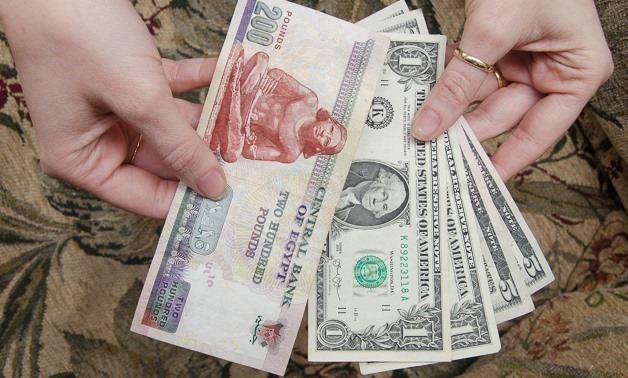Pound fluctuations raise exchange rate

[ad_1]
The pound exchange rate has improved by four percent to record LE 17.25 per U.S. dollar in April, compared to LE17.97 in early 2019.
One of the most notable reasons behind the aforementioned increase is the shift in emerging markets that became rich investments destination after the negative impact of the US monetary policy got dampened by the US Federal Reserve after fixing the interest rates on US dollar and announced that it does not expect to raise interest rates for the rest of 2019 amid slower economic growth.
Analysts expect an increase in the investment of debt instrument, supported by a report published by Reuters that said e merging market central banks interest rate cuts outstripped interest rate hikes for a second straight month in March, taking their cue from major central banks from the U.S. Federal Reserve to the central bank taking a dovish turn.
The report further added that interest rate moves by central banks across a group of 37 developing economies showed three net rate cuts – the same as in February and compared to one net rate hike in January.
The second month of net rate cuts marks the end of a tightening cycle in which interest rate rises by emerging market central banks had outstripped or matched cuts for nine straight months. This has led interest rates traders to increase investment in the currencies of these countries, including Egypt, to take advantage of the current high interest rates before they get reduced.

A report by Moody’s early this month said the International Monetary Fund (IMF)’s Egypt program has improved the country’s fiscal and external position, although slowly.
The implementation of the IMF program’s targets, including reductions in fiscal deficits and government debt levels as well as improvements in Egypt’s external liquidity position, will help address Egypt’s “key credit challenges,” the reported added, citing Steffen Dyck, a Moody’s Senior Credit Officer and co-author of the report. “However, ambitious fiscal consolidation targets will be challenging to achieve and could face implementation risks in a scenario of mounting public discontent.”
Moody’s predicted Egypt’s budget deficit will dip to 11.0 percent of the country’s GDP in fiscal year 2017 and 8.5 percent in 2019, compared to a 12.6 percent deficit in the fiscal year 2016, the report added.
While in a later report, Moody’s upgraded the credit rating of five Egyptian banks with stable outlook.
The five banks are Banque du Caire, commercial International Bank, the National Bank of Egypt, Banque Misr and Bank of Alexandria.
Moody’s upgraded the long- term local currency deposits to B2 from B3 of Banque du Caire, Commercial International Bank, National Bank of Egypt, and Banque Misr. As per Bank of Alexndria, threading rose to B1 from B2.
The agency noted that its local currency deposit outlook for all banks changed to stable from positive.
Regarding the long-term foreign currency deposit, Moody’s also upgraded their credit rating to B3 from Caa1.
Moreover, Moody’s upgraded the banking sector’s macro profile to Weak from Very Weak, noting that the banking sector faces several challenges of low incomes, high unemployment and difficult credit conditions.
“Credit conditions continued to be constrained by unsecured lending due to some legal loopholes, the concentration of loans in a limited segment of clients, and the marked increase in high-risk loans for SMEs.”
This rating comes a week after Moody’s upgraded the long-term foreign and local currency issuer ratings of the Government of Egypt to B2 from B3 and changed its outlook to stable from positive.
Source link





